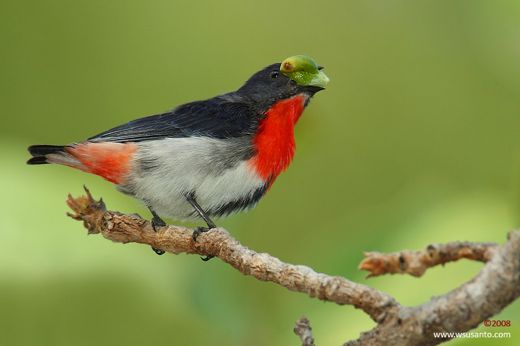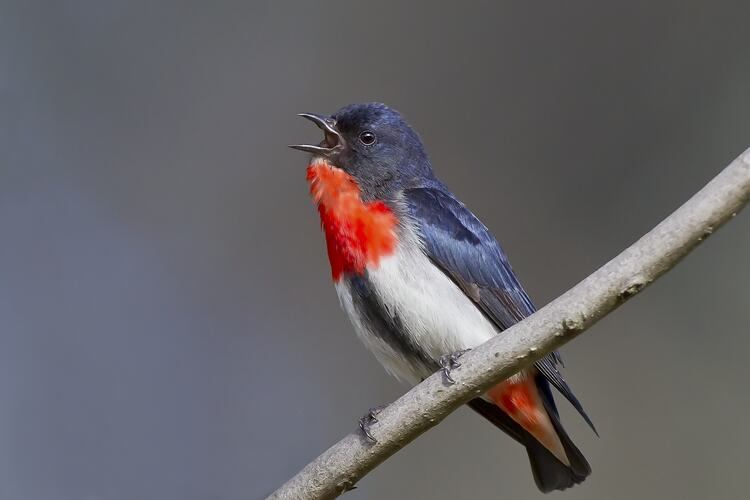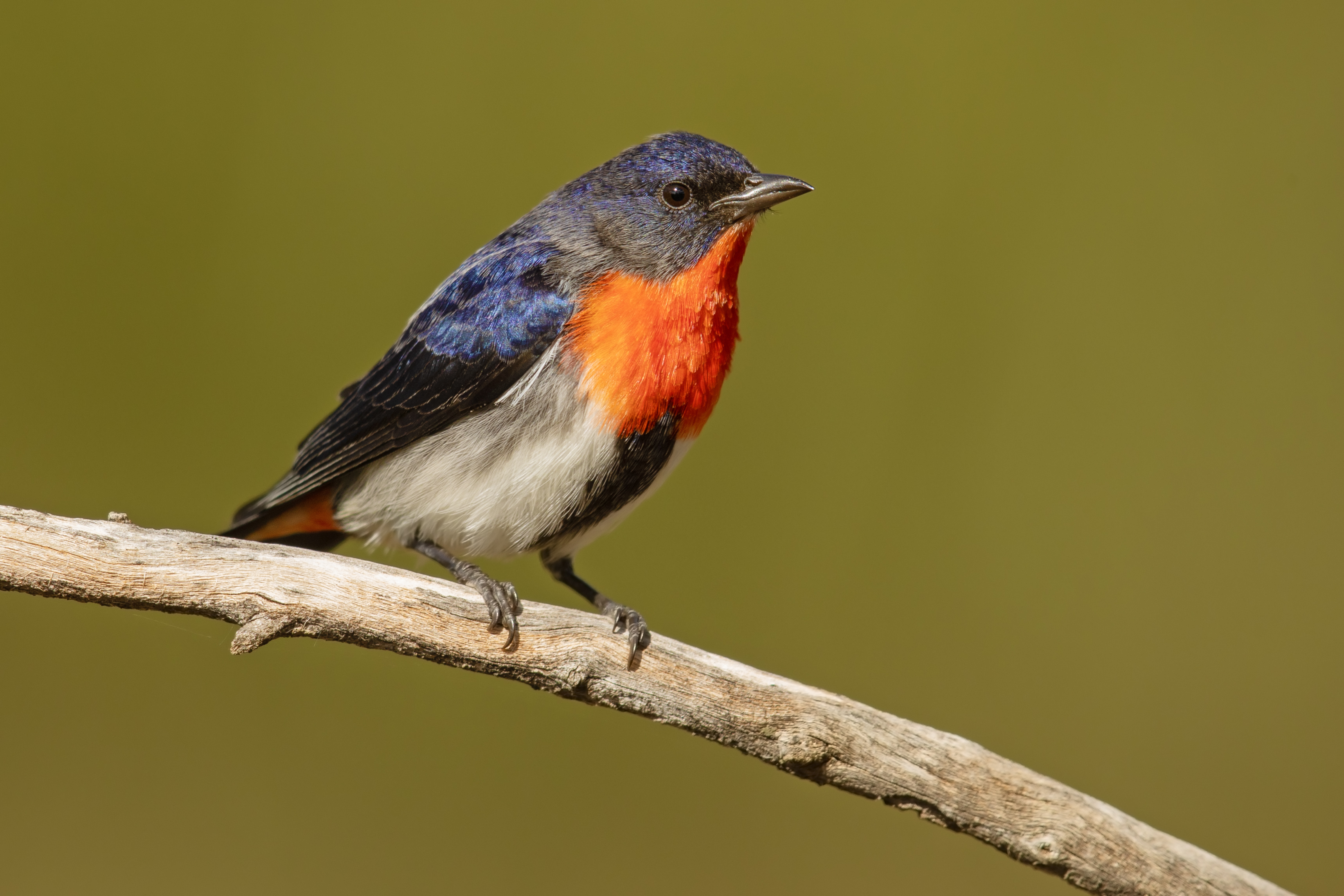
Mistletoebird (Dicaeum hirundinaceum) is also known as Australian Flowerpecker and Mistletoe Flowerpecker. The bird is confined to Australia, the Moluccas, Tanimbar and Aru Islands.
This flowerpecker is found wherever there are mistletoes, plants of the family Loranthaceae.

The birds help pollinate the mistletoe flowers when they visit to take the nectar and pollen from the flowers. They also take the ripe fruits (above), expertly squeezing them out of their outer case (below). The seeds, covered with a sticky layer of mucilage is swallowed, to be excreted rapidly, usually within 15 minutes or less.

Due to the stickiness of the seed, it is stuck to the bird’s cloaca, the common opening at the lower end of the digestive, excretory and reproductive systems. The bird usually aligns its body along a branch and by wiping its bottom, detached it, although it may take the bird to move away to finally detach the clinging thread.
\
In this way the mistletoe seed is stuck to the branch (left, photographed in Singapore), where it germinates, puts out root and a shoot. The roots bear ‘suckers’ will grow into the branch to tap the host’s nutrients. Mistletoes are semi-parasitic, as the green leaves will photosynthesise.
In Singapore, the Scarlet-backed Flowerpecker (Dicaeum cruentatum) and Olive-backed Sunbird (Cinnyris jugularis) are the two main species that are associated with the mistletoe.
The Blue-crowned Hanging Parrot (Loriculus galgulus) has also been seen collecting nectar and in the process helping to pollinate the mistletoe flowers.
Input and images of Mistletoebird by willis; image of mistletoe seeds by YC Wee.
This post is a cooperative effort between www.naturepixels.org and BESG to bring the study of bird behaviour through photography to a wider audience.

If you like this post please tap on the Like button at the left bottom of page. Any views and opinions expressed in this article are solely those of the authors/contributors, and are not endorsed by the Lee Kong Chian Natural History Museum (LKCNHM, NUS) or its affiliated institutions. Readers are encouraged to use their discretion before making any decisions or judgements based on the information presented.

